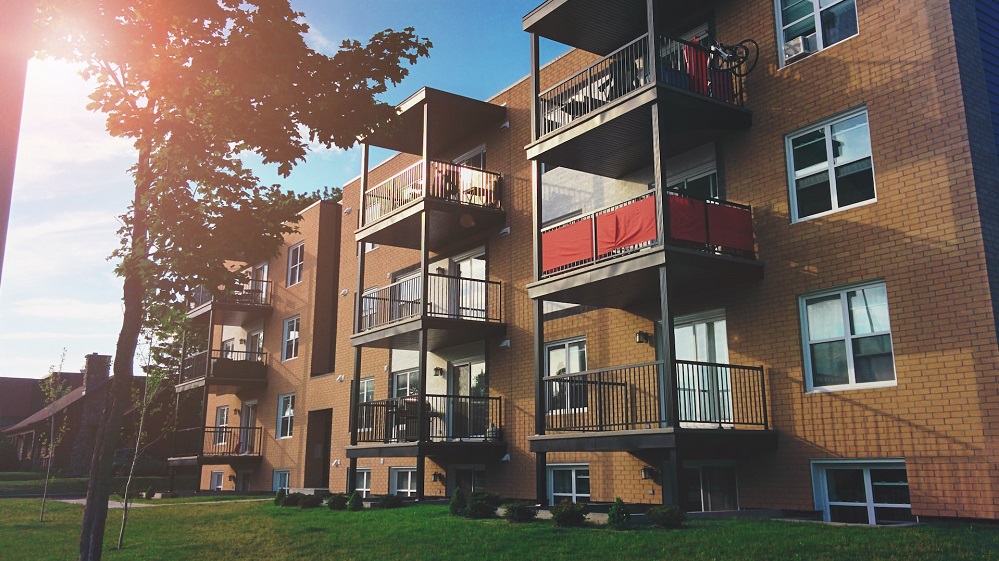
As it has turned out, July was an inflection point for multifamily rent growth nationally. Apartment demand, exceedingly tepid all year, had its highest monthly total in January. Despite this, and thanks in no small part to remaining excess occupancy built up during 2021, rent growth momentum above the typical level continued into the summer.
Monthly average effective rent growth for new leases peaked in June with a 1.3% gain. The rate of growth then declined in each subsequent month before finally entering negative territory in November to the tune of a 0.3% decline. November’s negative rent change came as November marked the fourth consecutive month with negative net absorption nationally. The net loss of more than 20,000 leased units in the month was the worst monthly net absorption result in more than five years.
As always, all numbers refer to conventional properties of at least 50 units.
Largest Markets Account for the Decline
Despite the national rent growth number being negative for November, this development was largely a story about the largest markets. ALN Tier 1 markets are the 33 largest markets in the country according to multifamily stock. It was only within this subset of markets that average effective rent for new leases dipped into the negative range in November – with a 0.4% loss.
At the market level, a couple of common threads emerge from the data. For one, the list of markets that have had monthly average effective rent change fall into the bottom 10% of markets in either October or November was dominated by the leading growth markets of the last few years. These include Austin, Boise, Charlotte, Las Vegas, Nashville, Orlando, Phoenix, Raleigh – Durham, San Antonio, San Bernardino – Riverside, Seattle, and Tampa. Other major metros like Atlanta, Denver – Colorado Springs, San Francisco – Oakland, and Washington DC have also been among those markets with the largest average rent declines in recent months.
The California Bay Area in particular has been at the epicenter of recent tech layoffs, but that industry is now a major component of many of the growth markets mentioned above.
Another common thread in the rent data for the last two months was that smaller markets within high-growth states have cooled in particular in recent months. Arizona, Florida, Nevada, and Texas stood out in particular with many of even most markets in those states seeing negative rent growth in the last two months.
As already mentioned, although there have been plenty of secondary and tertiary markets in negative territory in the last couple of months, when markets are grouped together according to size, only the Tier 1 markets suffered a loss at the average for new leases in November. The smaller markets, grouped from Tier 2 to Tier 4, saw average effective rent change between 0% and 0.3% during the month. In October, the 0% change for Tier 1 markets was the lowest monthly value.
Class A Rent Growth Not Yet Negative
Rent performance from a price class perspective was basically the inverse of the market tier developments. Whereas with market tiers only the top group suffered negative rent growth, with price class only the top group avoided negative rent growth.
Class A properties as a group only managed to avoid negative territory by the narrowest of margins and will almost certainly join that particular party in December. Average effective rent growth for new leases was unchanged in November, but the month represented the fourth consecutive month-over-month decline. Also notable was the fact that net absorption for Class A properties has continued in positive territory all year – making it the only price class for which that can be said.
November marked the second month in a row for which Class B net absorption was negative but was the first month this year in which average effective rent declined. The 0.3% decline made November the fifth straight month with a decline in average effective rent growth from the June peak of 1.4%.
For the bottom two price classes, average effective rent growth dipped into negative territory in October and remained there in November. These two subsets have also seen negative net absorption for a more sustained period than for Class B. For Class C properties, November was the sixth month in a row to see a net loss of leased units whereas the Class D group has now suffered seven consecutive months of negative net absorption. Each group saw average effective rent for new residents fall by around 0.5% in November – losses that were significantly larger than in October.
Takeaways
Rent growth was not going to be able to outrun poor apartment demand forever, and the rubber finally met the road over the last couple of months. October was the first month in which national average effective rent did not manage a gain since 2020, and November brought the first average effective rent decline in almost two years.
National average occupancy closed November almost exactly where it was in early 2020 leading into the pandemic. This means that the excess occupancy built up in the historic multifamily run in 2021 has now been entirely offset by the lackluster demand of 2022. This being the case, and with the seasonally weaker winter months ahead for the industry, it is increasingly possible that positive rent growth may be in hibernation until spring.[](https://alndata.com/takeaways-episode-28/)
To learn more about the data behind this article and what ALN Apartment Data has to offer, visit https://alndata.com.







Sign up to receive our stories in your inbox.
Data is changing the speed of business. Investors, Corporations, and Governments are buying new, differentiated data to gain visibility make better decisions. Don't fall behind. Let us help.













Sign up to receive our stories in your inbox.
Data is changing the speed of business. Investors, Corporations, and Governments are buying new, differentiated data to gain visibility make better decisions. Don't fall behind. Let us help.





